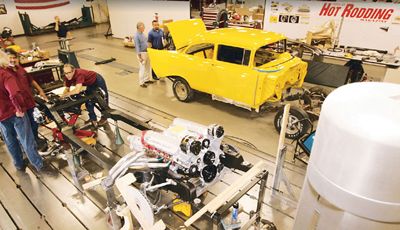
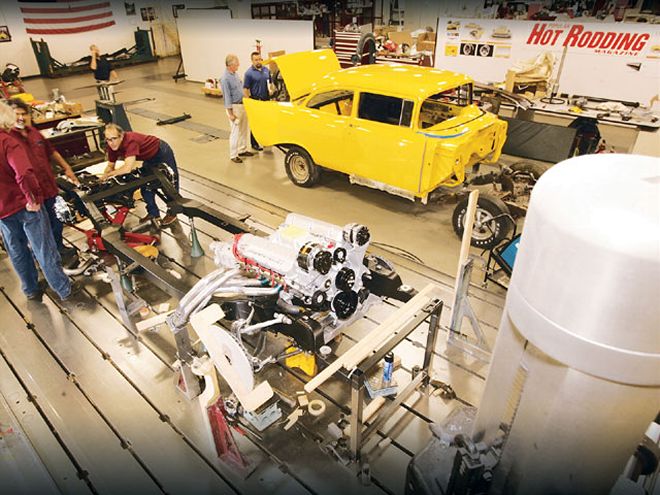
Project X
In our January 2008 issue we outlined how Project X was going home to General Motors after 50 years of service. Not only were we looking to sample the latest in crate engine technology from GM Performance Parts, but the vehicle integration geniuses at GM Performance Division (GMPD) had also offered to upgrade their old friend to a modern Pro Street cruiser. Who were we to say no?
For many reasons, when you look at the car's overall function, you start at the frame and build out. It seems obvious, but the frame is the foundation of the car that dictates the dynamics for all movements or performance levels. In the case of the '57 Chevy, the vehicle offers the classic peripheral-frame GM architecture that not only made these cars strong to begin with, but also has allowed them to withstand the test of time with quite a bit of grace. This is especially important for a car like Project X that has seen a lot of use and hundreds of dragstrip passes.
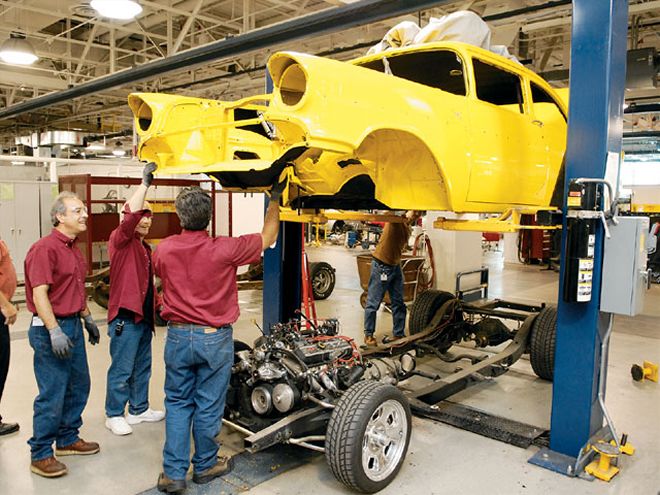 It's disassembly day at the GM Tech Center in Warren, MI, and Mike Copeland, Kevin Schultz, Mario Orlando, and Mike Hair are hard at it. Before Project X could be brought back to life after a trip to the factory, it had to be pulled apart. The GMPD techs carefully separated the body from the chassis.
It's disassembly day at the GM Tech Center in Warren, MI, and Mike Copeland, Kevin Schultz, Mario Orlando, and Mike Hair are hard at it. Before Project X could be brought back to life after a trip to the factory, it had to be pulled apart. The GMPD techs carefully separated the body from the chassis.
It is because of this logic that the technicians at GMPD started the latest transformation of Project X with a complete disassembly-all the way to the frame. The plan called for melding a 50-year-old chassis with the cuttingedge design of today's Chevy Corvette. To do that, GMPD scanned Project X's entire frame, then designed a strategy to incorporate a C6 frontend. In a modern GM production vehicle, the math data for every piece of the car is safely locked away somewhere in a GM computer. If you want to know how many hose clamps, wire ties, or millimeters of, well, anything, it exists somewhere in math data at GM. These huge data files allow all sorts of manipulations and final adjustments during the development and production phase of an automobile. As we said, these files exist for modern cars, but only a few faded blueprints of the original '57 Chevy designs remain. What to do? No problem, the GMPD technicians simply scanned the entire Project X frame, and in the process generated what we believe is the first complete math file that details every single aspect of the '57 Chevy frame.
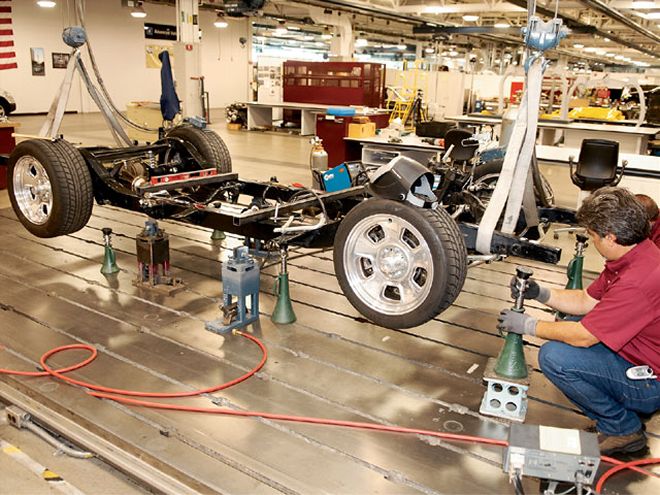 Here, the frame has been separated from the body, and the team is positioning the priceless '57 frame on one of dozens of surface plates in the tech center. The surface plate offers a perfectly flat surface with grooves for bolting/anchoring with portage equipment that allows for complete digital measuring.
Here, the frame has been separated from the body, and the team is positioning the priceless '57 frame on one of dozens of surface plates in the tech center. The surface plate offers a perfectly flat surface with grooves for bolting/anchoring with portage equipment that allows for complete digital measuring.
Once the Project X frame was in math, the technicians simply took the math file for a current production C6 Corvette and worked out how and where to make the two work together. In the end, our beloved Project X would enjoy all the benefits of the latest Chevy technology grafted into the existing frame.
Like all things at GM, 50 years of engineering has taught them a lot about suspensions. The stock '57 suspension consisted of a traditional coilover and a straight A-arm arrangement with ball joints and tie rod ends. It was functional, but it was sloppy at best and slow to react to driver input. Original owners complained of a lack of feel on the road with a very heavy feel during steering input that was only compounded by lots of body roll. For the most part, the car's weight drove the steering input with no self-centering. Compare that to the vehicles GM puts out today. Great driver feedback, vehicle self-centering, and instant response are all standard equipment. Add that to the superior materials and construction processes of today's GM, and the proposed modifications are an entire transformation.
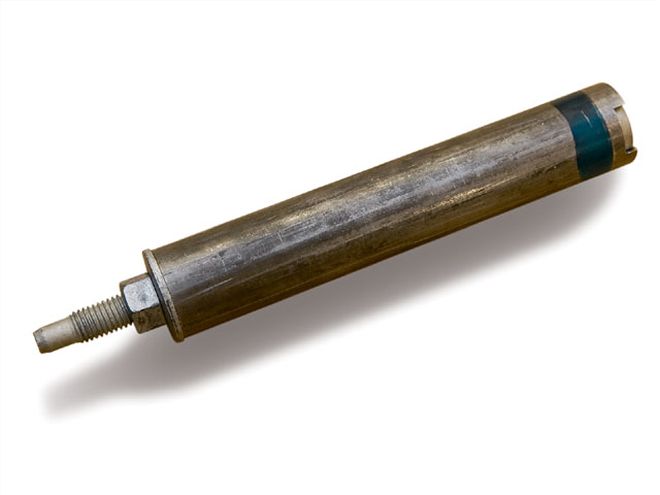 Here's a close look at one of the pieces of the special fixture used to hold the Corvette radle in position whileit was cut, resized, and welded. You can see it in position in the following picture.
Here's a close look at one of the pieces of the special fixture used to hold the Corvette radle in position whileit was cut, resized, and welded. You can see it in position in the following picture.
One interesting benefit of putting Project X's frame through GM's math data programs is that it allowed the GMPD engineers to run a design failure mode effectiveness analysis. This process allowed them to determine if there are any weak points in the frame by loading it with stress beyond what you would see on the road or track. In the stock '57 frame, the engineers identified areas for improvement at several points. This allowed them to plan additional materials or reinforcements for those locations. Also, previous studies found that a traditional butt-weld frame connection could be a weak area. Therefore, the team has adopted the reinforced plate method for connecting two frames.
We also need to mention that the Anniversary 427 big-block prototype engine we'll be installing in Project X is roughly the same mass as the LS3 for which the Corvette cradle was designed. The pictures that follow will detail the steps in modifying the front suspension, and in a future issue we'll detail the rear suspension and what it takes to harness 480 horsepower of bigblock Chevy.